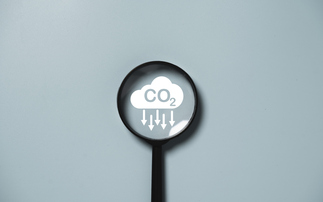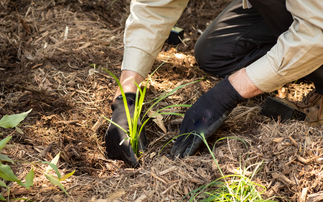
Partner content: As more and more organisations adopt decarbonisation commitments, what part do carbon reduction credits have to play in helping us to reach net zero?
What are carbon reduction credits?
Carbon reduction and removal projects generate carbon credits, with each credit relating to one tonne of CO2, or equivalent greenhouse gases (GHGs). There are two types of credit:
- Carbon reduction credits relate to avoiding the release of CO2 into the atmosphere (also known as offsetting).
- Carbon removal credits relate to the removal of CO2 already in the atmosphere.
Buying a carbon credit acts as a contribution towards balancing the purchaser's GHG emissions and supports progress towards net zero, even when the organisation has hard-to-abate emissions remaining.
How do carbon reduction credits work?
Carbon credit projects are defined as nature-based, engineered, or a mix/hybrid of the two. For example, forestry conversion - forest management that emphasises stewardship of forest resources - is a nature-based carbon reduction credit example. Cleaner Cookstoves projects, which replace stoves that burn 'dirty' fuels with locally produced alternatives such as solar or wood pellets, is an example of an engineered carbon reduction credit project.
Organisations can buy one carbon reduction credit on the Voluntary Carbon Market (VCM) for every metric tonne of CO2 they emit. They can choose which projects they'd like to buy these credits from, and as a result can boost their corporate social responsibility (CSR) and environmental, social and governance (ESG) credentials.
Who are carbon reduction credits for?
Carbon reduction credits should be used by organisations who are already measuring - and looking to reduce - their Scope 1 and Scope 3 carbon emissions. As the Oxford Offsetting Principles suggests, organisations should address avoidable emissions, source carbon reduction and carbon removal credits, and transition towards buying high quality carbon dioxide removals (CDRs). Most organisations will need to do all three of these - which has the added benefit of helping to progress our net zero future.
Many large companies such as Microsoft and Amazon have adopted reduction and removal credits as part of their commitment to reach net zero. They can then use them to offset emissions caused by their own activities (Scope 1) or as a result of activities within their value chain (Scope 3). In 2021, the global value of Voluntary Carbon Markets (VCM) reached almost $2bn - an increase of nearly four times on the total from the previous year.
As the VCM grows and supports even more sustainability projects globally, the range of available credits will also expand. Organisations will have an increased number of purchasing opportunities and more choice in terms of the projects and technologies that best suit their strategies and budgets.
It'll make sense for most purchasing organisations to transition, over time, towards buying more credits from carbon removal projects.
Are there any risks associated with carbon reduction credits?
When looking at carbon reduction credits projects, it's important to consider the durability (i.e. the resistance to reversal), amongst other things. Given that many carbon reduction projects involve tree planting, these carbon reduction credits can be higher risk than others and are particularly vulnerable to wildfires of the kind we've seen all too often over the last few years.
Secondly, some carbon reduction credit projects can be difficult to calculate. Calculating emissions reductions brought about by some projects can be a complex process and often estimates are used. There's also currently a lack of regulation with reduction and avoidance credits. There is no requirement for those purchasing carbon reduction credits to disclose who's using them, and how many are being used. The system is voluntary and currently, unregulated, unlike compliance markets such as the EU's emissions trading system.
Because of this, it's important that organisations have a balanced and diversified portfolio that spreads the risk. Partners like Drax can advise on this.
Why do we need carbon reduction credits?
Carbon reduction credits are necessary as one part of the many solutions needed to combat climate change. The trading of carbon credits is on the rise and the market has attracted huge levels of interest and investment - which is necessary for action.
When done right, carbon projects could inject huge sums into underfunded climate solutions. And these innovations provide the necessary solutions to advance technological development to transition us to more sustainable systems.
Ready for action?
In collaboration with our partner CBN, Drax is currently working with a number of clients to help them with carbon accounting and in creating carbon mitigation plans. And with our product, Carbon Portfolio, you can select the right kind of carbon credit projects for your organisation.
We have also partnered with Patch to enhance our carbon credit offering. Patch's software helps voluntary carbon market participants buy, sell, and manage credits. With the Patch Radius software solution, Drax customers will be able to seamlessly purchase from a number of portfolios of carbon credits, including those from BECCS by Drax.
Learn more at energy.drax.com.
This article is sponsored by Drax.








